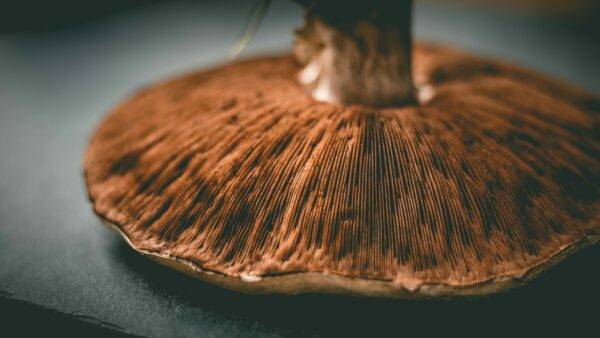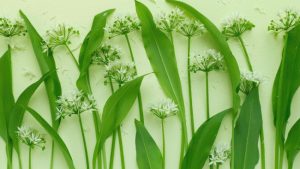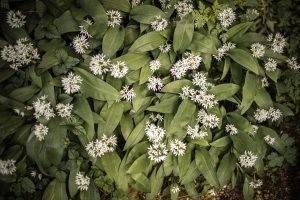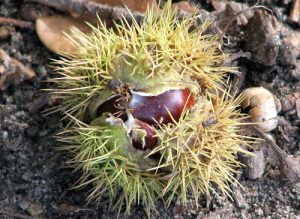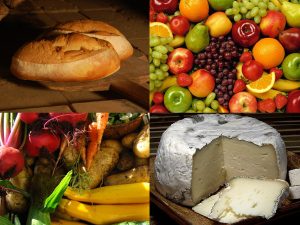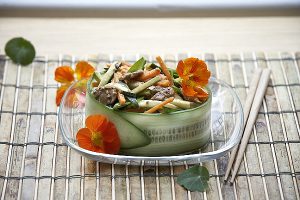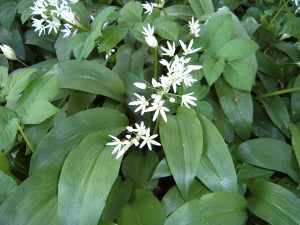January Blues
January is not what I would consider a popular month. In fact, I would position it fairly high on the list of least popular months.
The anticlimatic air that inevitably follows the festive season, the lack of light, the cold, the absence of colour… Why people choose this month to deny themselves of their favourite treats and vices is beyond me!
At this time of year Nature appears to be still, sleeping perhaps. It’s a quiet month for gardeners and foragers alike but those who take time to look a little closer are delightfully rewarded with sweet promises of Spring.
January Greens
Surprisingly, there can be plenty of wild foods available at this time if you know what to look for.
The health benefits that come with foraging for your own food are particularly valuable at this time, both for our winter-weakened immune systems and gloomy mental state.
Here are some common wild foods you can forage in January, based on what I know is available, at least here in the South West of England.
Three Cornered Leeks – Allium triquetrum

These triangular leaves are already popping up in (and out of) gardens across the UK.
This illegal immigrant of the plant world is listed in Schedule 9 of the Wildlife and Countryside Act in England and Wales, meaning they are illegal to plant or otherwise cause to grow in the wild.
Many gardeners loath this invasive non-native plant with a passion. Personally, I think there are far worse things to be invaded by than a delicious ingredient!
I consider myself lucky to have them in my garden and the flowers in Spring are very pretty.
They’re easiest to identify when flowering but once you know where to look you will quickly learn to recognise the “cornered” grass-like leaves.
There are some poisonous plants that look similar at this stage but none of them have that distinctive pungent aroma of the Allium family.
Few Flowered Leek –Allium paradoxum is a close relative found more commonly in Northern parts of the country and Scotland.
The leaves can be snipped or pulled and used raw like chives as a tasty garnish or cooked into any dish to add a nice oniony flavour.
Read more about Three-Cornered-Leeks here.
Dandelion – Taraxacum officinale

Dandelion is a wonderful wild food, easy to identify, abundantly common, healthy and delicious.
The honey flavoured flowers are sparse at this time but the leaves can be gathered throughout the year, just choose the youngest most succulent looking ones. The bitter greens can be an acquired taste but using small quantities in dishes gives a nutritional boost. Acidic ingredients, like lemon juice or vinegar, can help reduce the bitterness.
Now is a good time to harvest the roots, and get a head start on your weeding!

It’s worth mentioning that it’s illegal to uproot any wild plant in Britain without the permission of the landowner or occupier, though I imagine it will be freely given in this case.
The roots are pretty tasty when cooked. Some people recommend peeling them but I prefer to just give them a good scrub.
Add them to soups or stews as you would other root vegetables.

Jelly Ear – Auricularia auricula-Judae

This is not the tastiest or prettiest of wild mushrooms but what it lacks in flavour and aesthetics it more than makes up for in being easy to find and identify.
These funny looking fungi grow primarily on Elder Trees, so that is where you should look for them.
If you think you’ve found them growing on other substrates, caution is definitely advisable.
A friend recently informed me they had found some growing on a disused painted wooden box, which sounded unlikely. I went to have a look and had to admit they looked similar at first glance but closer inspection revealed crucial differences…

These are one of the Peziza species, known as Cup Fungi. They grow upright as shown here, unlike the Jelly ears which grow downwards.
They also appear far more brittle but the most important indicator is that these are not growing on an Elder Tree.
It’s possible to find them on other deciduous trees but Elder is the most common and a useful key to identification.
Once you have encountered the unique jelly-like texture of Auricularia auricula-Judae, you should have little trouble recognising them.
The outer surface is somewhat fuzzy while the inner surface is smooth and shiny with an eerily vein-like appearance (“earily” get it? 
The texture is very much as you would expect. Whether that’s a good thing is largely a matter of preference.
Many people prefer to dry them and add them powdered to soups etc (they also have thickening qualities). You can even harvest them when they are dry on the tree.
A word of warning: They do actually explode when fried so keep a lid on it!
They seem to be particularly good in Asian style dishes and can be re-hydrated in flavourful liquids for sweet or savoury snacks.
I haven’t tried it yet but using orange juice or liqueur and then covering in chocolate is a popular suggestion.
Read more about Jelly Ears in my Mushroom Journal.
Sow Thistle –Sonchus spp

According to Wild Food UK, there are eight species of Sow Thistle in the UK. My wild flower book lists 4 of them, which are Corn Sow Thistle (S. arvensis), Marsh Sow Thistle (S. palustris), Common Sow Thistle (S.oleraceus) and Prickly Sow Thistle (S. asper).
There are at least 50 known species world wide, though, some sources list many more.
They do bare a resemblance to Dandelion leaves, being of the same family, and are similarly valuable, having many of the same nutritional and medicinal qualities.
I find them less bitter than Dandelion.
Sonchus oleraceus, also known as Smooth Sow Thistle, is one of the most common, and as the name suggests, lacks the prickly leaves of other species, making it more palatable.
There are other similar looking plants in the Asteraceae family but nothing poisonous.
The leaves are best eaten when young and tender, so now is a good time to harvest the new growth.
Common Nettle – Urtica dioica

Nettles are a favourite wild green of mine, offering an abundant source of vitamins and minerals.
The stings are disarmed in the cooking process, thankfully, and can be gathered using protective gloves or by firmly pinching the top of the stem to remove.
They are at their best in Spring but fresh new growth (as pictured above) can be found even during January.
I just pinch off the top leaves and use them like spinach or chard.
They make a delicious addition to soups and pasta dishes.
Turkey Tail – Trametes versicolor

This pretty Polypore deserves a mention, though not technically a food, inedible as it is.
It’s abundant, easy to recognise and identify and of significant medicinal value, so it’s well worth adding to your winter diet for an immune system boost.
There are some similar looking fungi but the key to identification is on the lower surface which is white with tiny pores visible (lookalikes have either smooth undersides or much bigger pores).

The concentrically zoned colours of the upper surface can vary greatly among this species, often resembling the tail of a turkey, hence the common name.
Popular as a health boosting tea, I prefer to use it in soups and broths.
It has a leathery texture but can be dried and powdered (which results in a surprisingly fluffy substance!) to add to soups.
Sometimes I add the powder directly (which can be a little gritty at the bottom), or I allow it to brew in some hot liquid for at least 15 minutes before straining the liquid to use.
Alternatively, you can use a pair of scissors to cut into small pieces before brewing and straining.
Read more about Turkey Tail in my Mushroom Journal.
Sea Beet – Beta vulgaris

If you’re lucky enough to live near the coast you may be able to find this delicious wild green. Though best in Spring, the leaves can be harvested through most of the year.
Some of our most popular cultivated plants (Sugar Beet, Chard, Beetroot) were hybridised from this plant.
It is similar to Spinach but far superior to the sweaty bags of leaves commonly found in supermarkets!
Some Other Wild Foods You Can Forage In January.
Alexanders – Smyrnium olusatrum
Black Mustard – Brassica nigra
Cleavers – Galium aparine
Chickweed – Stellaria media
Common Sorrel – Rumex acetosa
Garlic Mustard – Alliaria petiolata
Hairy Bittercress – Cardamine hirsuta
Scarlet/Ruby Elf Cups – Sarcoscypha austriaca/coccinea
Velvet Shanks – Flammulina velutipes
Birch Polypore – Fomitopsis betulina
Of course, this is by no means an exhaustive list and weather variations play a big part in what is available during this month.
On a recent walk, I spotted Primrose (Primula vulgaris) leaves and flowers, Succulent Navelwort (Umbilicus rupestris), Hogweed (Heracleum sphondylium) shoots as well as Watercress (Nasturtium officinale) and plenty of Yarrow (Achillea millefolium) leaves.
And I’m still using fresh Herb Robert (Geranium robertianum) leaves from my garden.
I know some lucky folks are still harvesting Winter Chanterelles (Craterellus tubaeformis).
Please feel free to comment with any plants or fungi that I’ve missed or that you are finding during the month of January.
Cautions:
Never eat any wild plant or mushroom unless you are 100% sure of identification. Make use of online resources like First Nature or Wild Food UK.
There are some excellent books available to help with identification too.
Look for local foraging guides who may be running courses in your area.
Avoid areas where dogs are likely to relieve themselves as well as busy roadsides or areas that may have been sprayed with toxic chemicals.
Book Recommendation:
The Foragers Calendar by John Wright provides a comprehensive month by month foraging guide with several other useful chapters, including poisonous species to be aware of and preservation tips.

